Kukulkan ("Plumed Serpent", "Feathered Serpent") - a Maya snake deity.

Quantifying the World and Its Webs: Mathematical Discrete vs Continua in Knowledge Construction (PDF) - by Giuseppe Longo (2019) (Short video of Longo about his paper)
A Mathematical Critique of Computational Thinking in the Sciences of Nature - talk by Giuseppe Longo (1h, 2017)
Alphabets, Axioms, DNA: On Human Knowledge and the Myth of Alphanumeric Coding - talk by Giuseppe Longo (30min, 2019)
Never Underestimate the Intelligence of Trees - Plants communicate, nurture their seedlings, and get stressed - Article by Nautils about Suzanne Simard's work.



The secret language of trees - Short Video by Camille Defrenne & Suzanne Simard
Prof. Dr. Günter von Kiedrowski - on "Chemical Self-replicating systems: Facts, goals, and visions" (7th European Conference on Artificial Life, 2003)
"Why replication at all? In the natural context, replication has the same meaning as integration in electronics. I mean, if you are able to do integrate electronic circuitry, you can establish Moore's Law and in chemistry this kind of replication was not addresses so far. But if it is possible to replicate objects, then it is possible to make things cheaper, to pay for complexity. - Prof. Dr. Günter von Kiedrowski
Related:
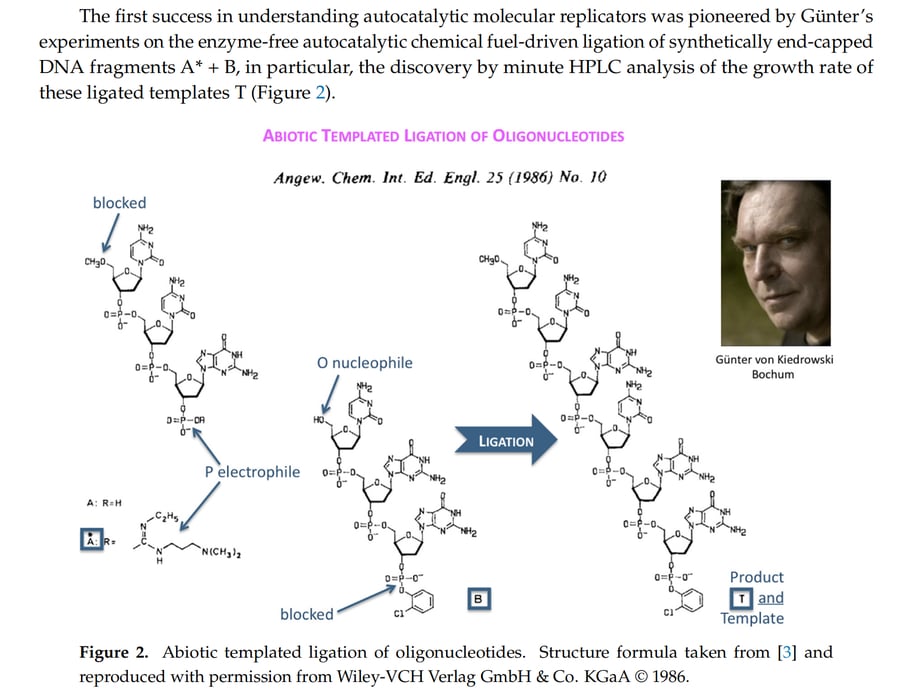
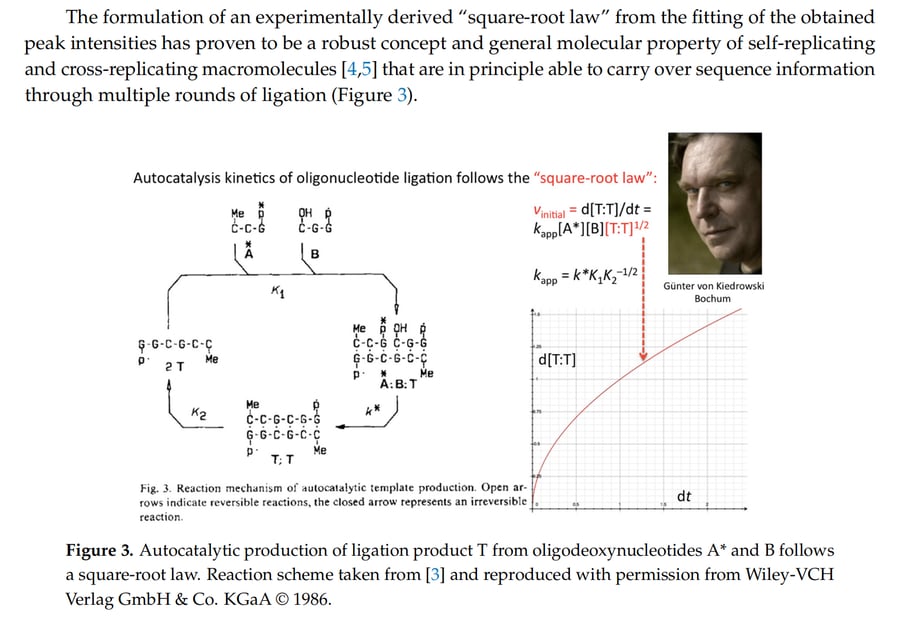
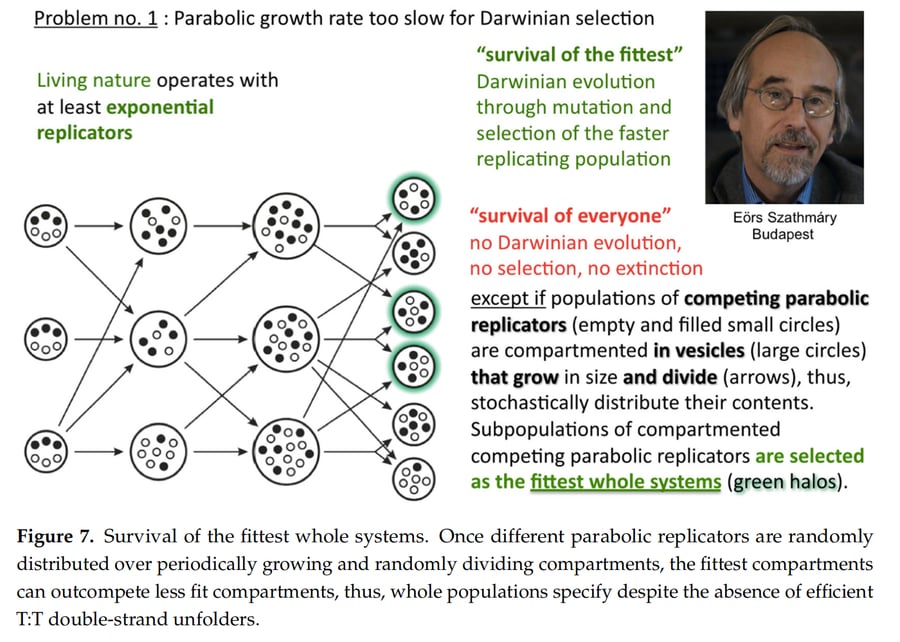
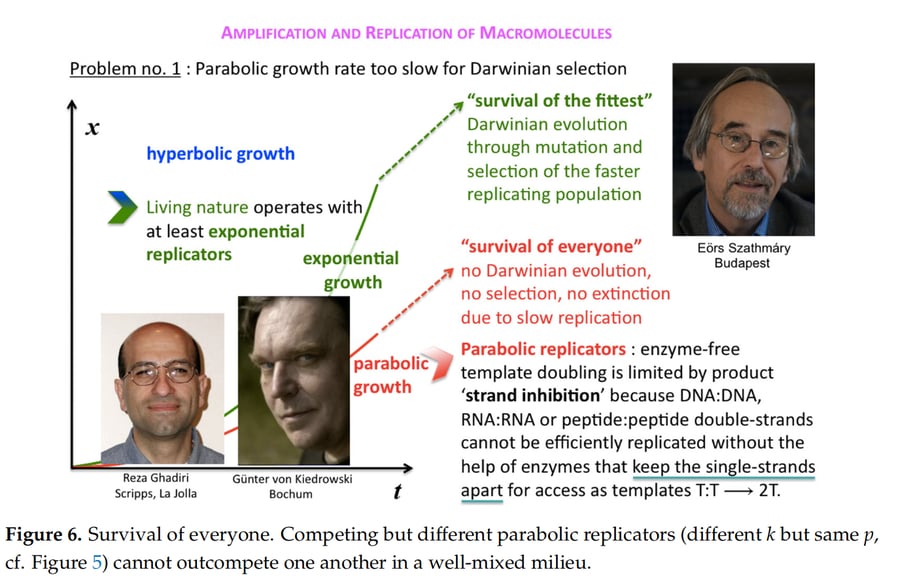
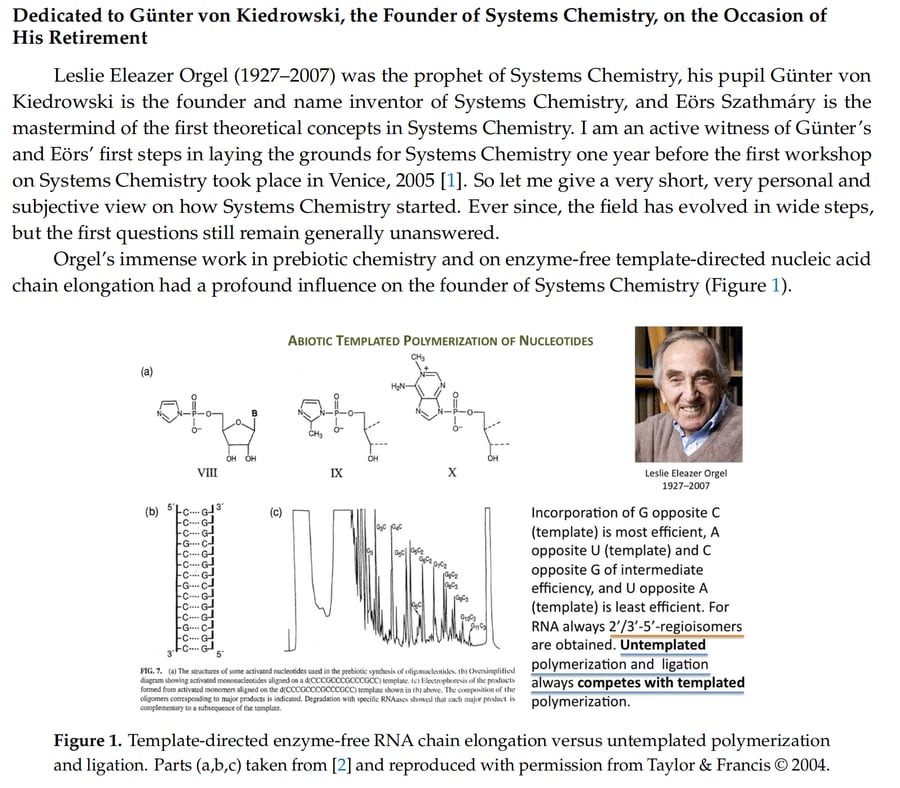

Health care costs are destroying American families (Salon) "slow-eugenics"
“The average premium for family coverage has increased 22% over the last five years and 54% over the last ten years, significantly more than either workers’ wages or inflation,” according to an annual survey by the Kaiser Foundation of employer-sponsored health coverage.
The Kaiser survey provides a uniquely detailed analysis and is based on more than 2,000 interviews with public and private firms. It reported that annual premiums for employer-sponsored health care plans reached $20,576 this year, an increase of 5%, "with workers on average paying $6,015 toward the cost of their coverage."
Almost all workers in these plans not only share in the premium cost but have to absorb an annual deductible. That too has increased rapidly, Kaiser reports, by 36% over the last five years and a remarkable 100% over the last 10 years.
In a study published in May of this year in the Journal of General Internal Medicine, researchers concluded that 137 million Americans struggled with medical debt. Adults under 65 (and hence not eligible for Medicare) without health insurance fared the worst. “With trends towards higher patient cost-sharing and increasing health care costs, risks of hardship may increase in the future,” the study concluded"
Golden Age of Medicine 2.0: Lifestyle Medicine and Planetary Health Prioritized (PDF)
Abstract: "The 'golden age of medicine' - the first half of the 20th century, reaching its zenith with Jonas Salk's 1955 polio vaccine - was a time of profound advances in surgical techniques, immunization, drug discovery, and the control of infectious disease; however, when the burden of disease shifted to lifestyle-driven, chronic, non-communicable diseases, the golden era slipped away. Although modifiable lifestyle practices now account for some 80% of premature mortality, medicine remains loathe to embrace lifestyle interventions as medicine. Here, we argue that a 21st century golden age of medicine can be realized; the path to this era requires a transformation of medical school recruitment and training in ways that prioritize a broad view of lifestyle medicine. Moving beyond the basic principles of modifiable lifestyle practices as therapeutic interventions, each person/community should be viewed as a biological manifestation of accumulated experiences (and choices) made within the dynamic social, political, economic and cultural ecosystems that comprise their total life history. This requires an understanding that powerful forces operate within these ecosystems; marketing and neoliberal forces push an exclusive 'personal responsibility' view of health - blaming the individual, and deflecting from the large-scale influences that maintain health inequalities and threaten planetary health. The latter term denotes the interconnections between the sustainable vitality of person and place at all scales. We emphasize that barriers to planetary health and the clinical application of lifestyle medicine - including authoritarianism and social dominance orientation - are maintaining an unhealthy status quo."






Peppercorns: "System failures that are not bugs. Peppercorn in your soup VS fly in your soup, could be in design, but may still be unpleasant or unusual." - coined by @lawrennd
Study Finds Common Dolphins Tend to Be 'Right-Handed' (Research)
"Researchers working with the Dolphin Communication Project in the US spent six years watching a population of common bottlenose dolphins (Tursiops truncatus) forage from the ocean floor, taking note of which way they tended to turn, and found the animals like to keep their right eye on the food. Having a preference for one side of the body or the other is now understood to be common throughout the animal kingdom. Gorillas and chimpanzees favour their right hands, like us."
Dolphins struggle against noise pollution
"A new study has found increased ship traffic and dredging in India’s Ganga River is rapidly heightening noise levels in the river and stressing the river’s iconic dolphins and changing how they communicate."
"How 5G Wireless Technology Makes Us ‘Lab Rats’ - People should worry." - Professor Narcís Parés, University Pompeu Fabra in Barcelona.
As Parés explains, there are already hundreds of studies showing a large number of negative effects. “According to these studies, these waves affect our body at a cellular level, changing the electro-chemical control systems that they use to regulate themselves. This is the case, for example, with voltage-gated calcium channels, which are fundamental for the functioning of muscles, neurons, hormones and DNA.”
“Another example is the disruption of the blood-brain barrier, which protects our brain from potentially harmful elements in the blood. As a result, people suffer from muscular pain, sleeping trouble, neurological disorders, thyroid disease, reduced fertility or cancer. There also seem to be clear links between Alzheimer’s or autism and EMF. And we are only talking about human beings.”
According to Professor Narcís Parés, other studies have shown an impact on the environment, “which the 5G technology is going to increase because it is already being deployed at a planetary level via satellites. Its millimeter waves cover the bodies of insects completely. In this sense, bees are already seen to be affected as much as by pesticides.”
Uniqlo's Tokyo Warehouse is 90% Robotic (Financial Times)
Presenting POET (Paired Open-Ended Trailblazer) - by Jeff Clune (Uber AI Labs)
ICML 2019 Tutorial: Recent Advances in Population-Based Search for Deep Neural Networks

‘What are the defining characteristics of a natural system for us to perceive it as being alive?’’ - Robert Rosen in "Life Itself: A Comprehensive Inquiry Into the Nature, Origin, and Fabrication of Life"
"I do not consider myself a philosopher. I am a biologist, attempting to grapple with the Schrodinger question, “What is Life?” It turns out that this is not an empirical question, to be resolved through observation in a laboratory" - Robert Rosen in "Boundaries and barriers: On the limits to scientific knowledge" (1996)
"No finite organism can completely model the infinite universe, but even more to the point, the senses can only provide a subset of the needed information; the organism must correct the measured values and guess at the needed missing ones."..."Indeed, even the best guesses can only be an approximation to reality - perception is a creative process." - from "Robert Rosen: The Well Posed Question And Its Answer-why Are Organisms Different From Machines?" - by Donald C. Mikulecky
The human body completely changes the matter it is made of roughly every 8 weeks, through metabolism, replication and repair. Yet, you're still you --with all your memories, your personality... If science insists on chasing particles, they will follow them right through an organism and miss the organism entirely. — Robert Rosen, (as told to his daughter, Ms. Judith Rosen)
Presentation "Anticipatory Systems Theory: What the science of Life and Mind can teach us about science, itself" - by Judith Rosen
Presentation: "Robert Rosen And George Lakoff: The Role Of Causality In Complex Systems" - by Hamid Y. Javanbakht
China flight systems jammed by pig farm’s African swine fever defences (scmp)
"Chinese state media reported last week that gangs were exploiting the African swine fever crisis by deliberately spreading the disease by using drones to drop infected items on to pig farms. A Chinese pig farm’s attempt to ward off drones – said to be spreading African swine fever – jammed the navigation systems of a number of planes flying overhead. In more common cases, according to the magazine, the criminals spread rumours about the presence of the virus to achieve a cheap purchase price."
The "A Bifurcation called 2016" video by Mihai Nadin provoked a #Comment on time:
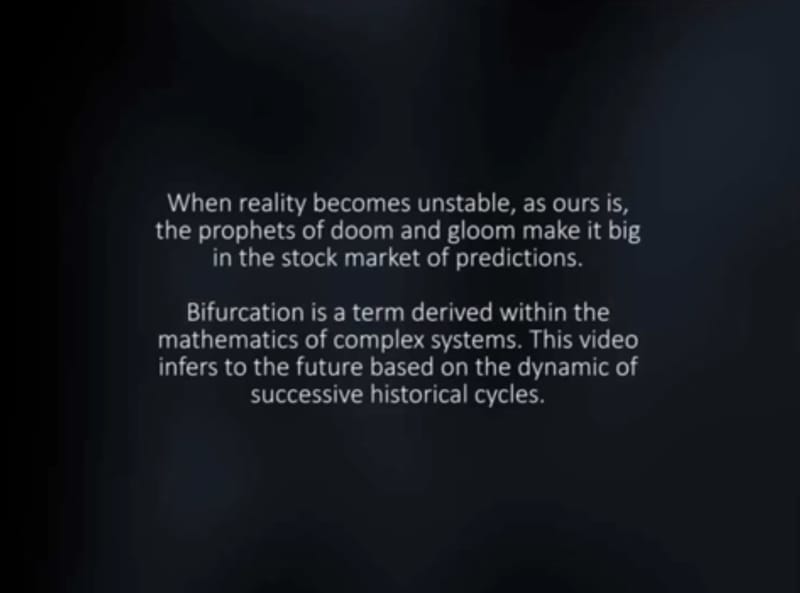
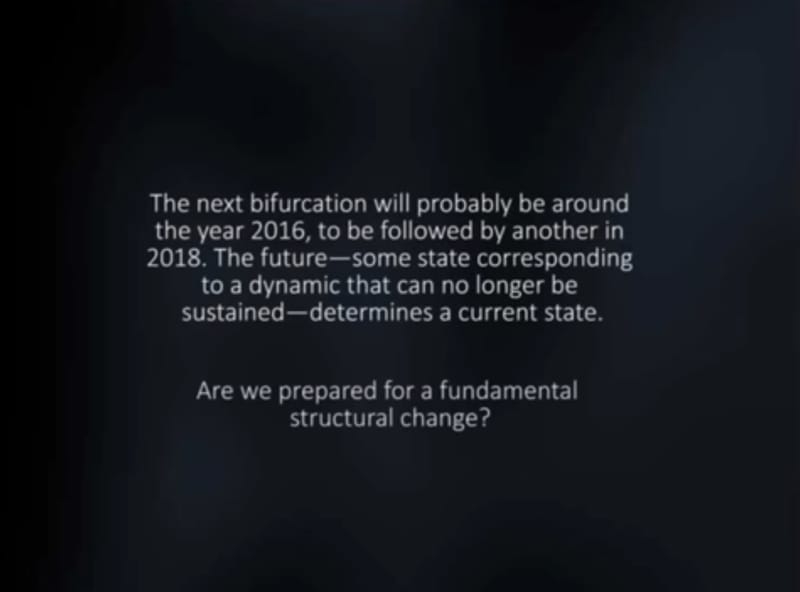
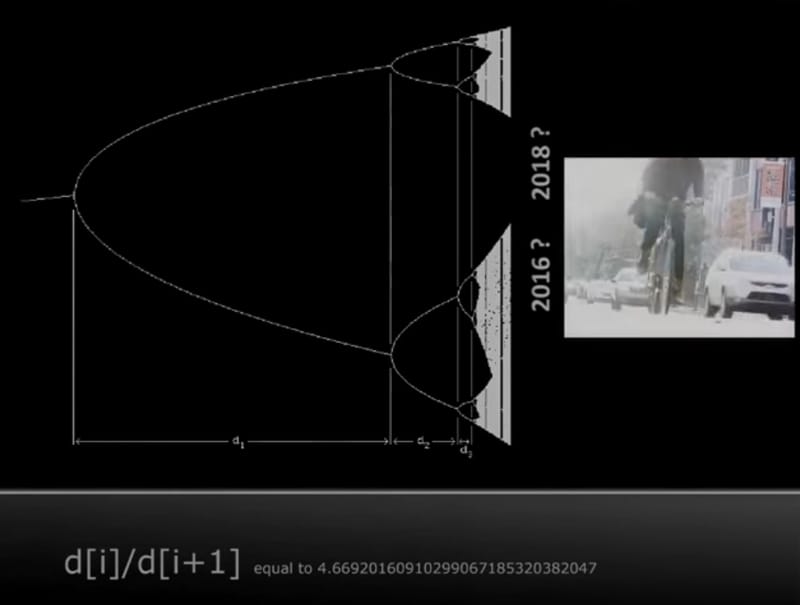
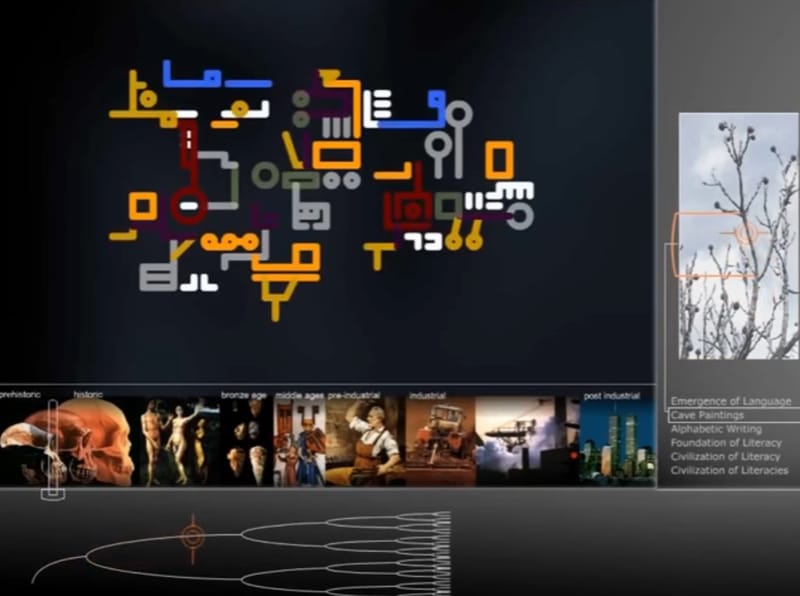
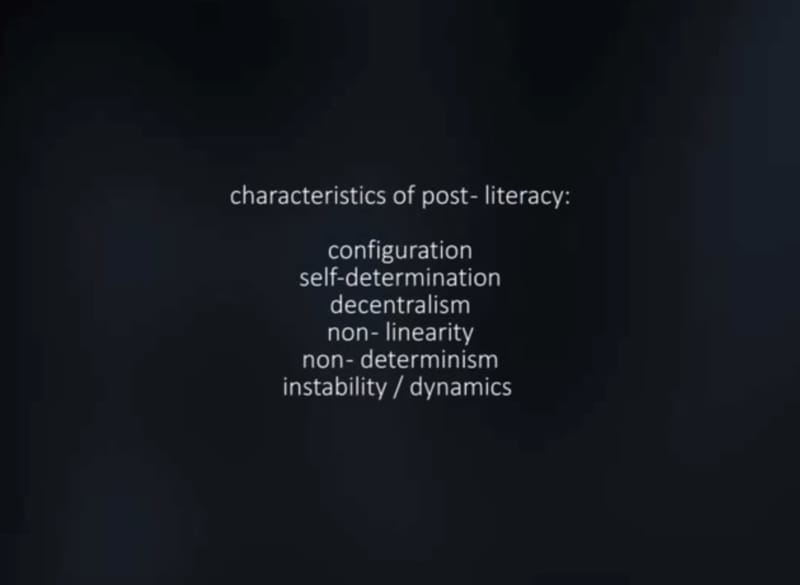
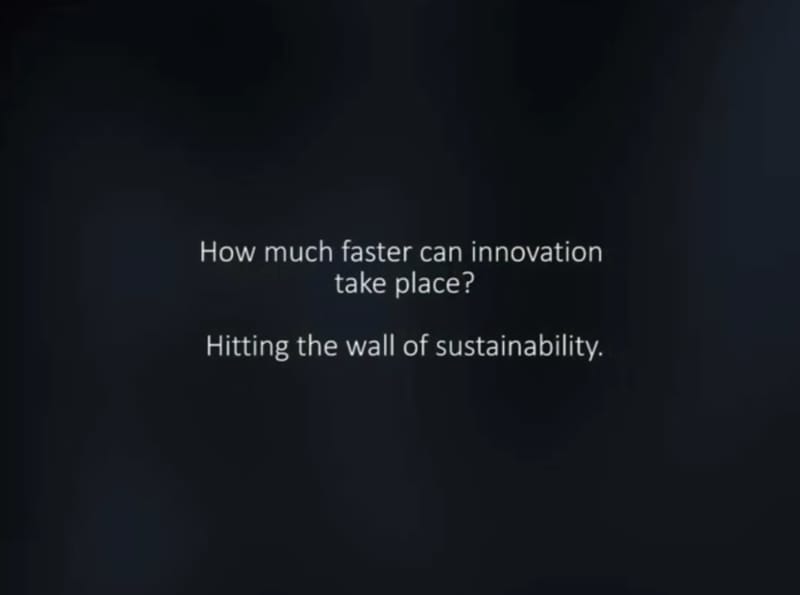
Mihai Nadin's entertaining 'bifurcation' model/theory is somewhat related to Terence McKenna's "Timewave Zero". I find it peculiar, that in all such "models of accelerating time/change" the critical singularity event is predicted to happen ("accidentally / conveniently") presciently during the life-time (or end of life, akin to the christian "armageddon") of the person stating the theory. Temporarily is the ultimate magic trick: As scientifically/objectively hardly approachable, it firmly is in the domain of the political, subjective and comedic. Paul Virilio's essay "Speed And Politics" on "Dromology" is an interesting read in this context. Within infinity, the distance from contemporary complex "Theories of Change" to ancient "Book of Changes" (I Ching) , is the same as the square root of negative one: Imaginary.
Terence McKenna - Timewave Zero:
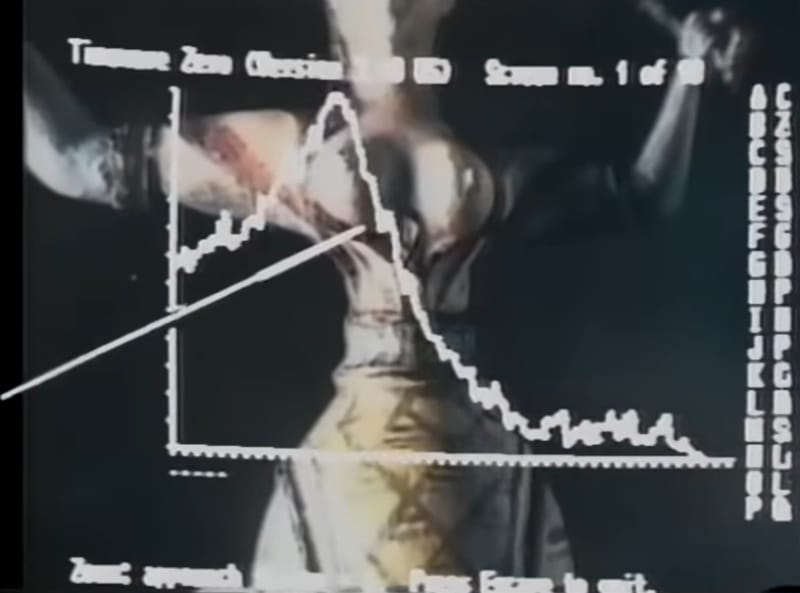

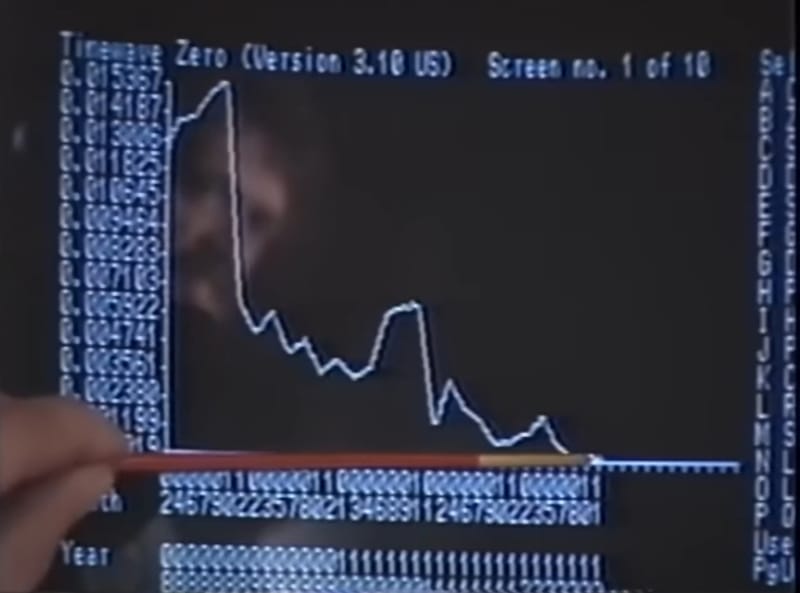
A far more pronounced example of the "acceleration fallacy" (almost bordering on the brute-force senseless & pointless speed-cult of Ray Kurzweil & co.) can be found in the following talk:
"Sense-Making in our Post AlphaGo World" - by John Seely Brown
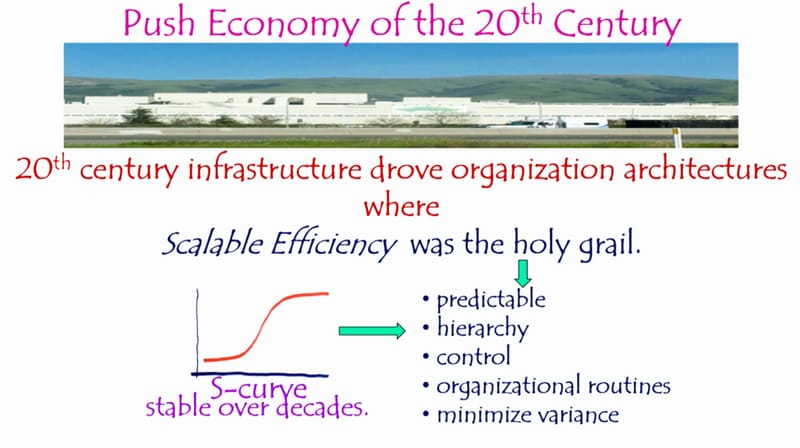
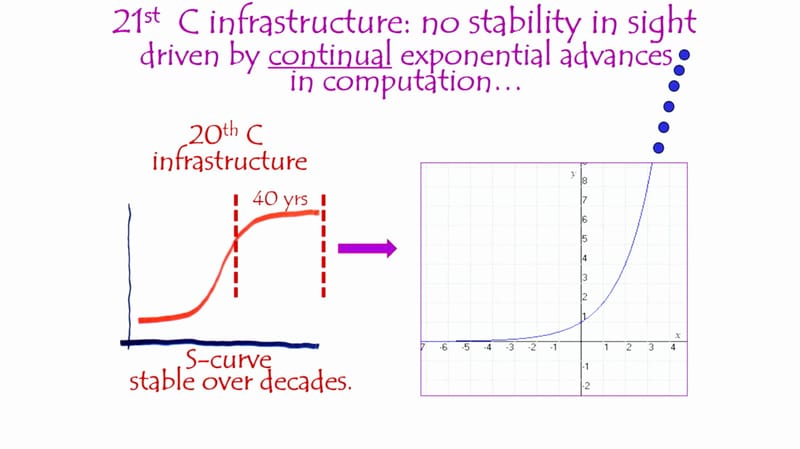
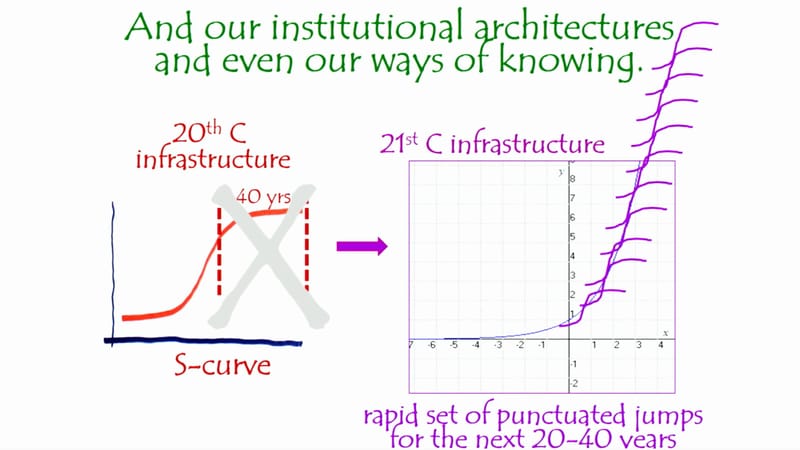
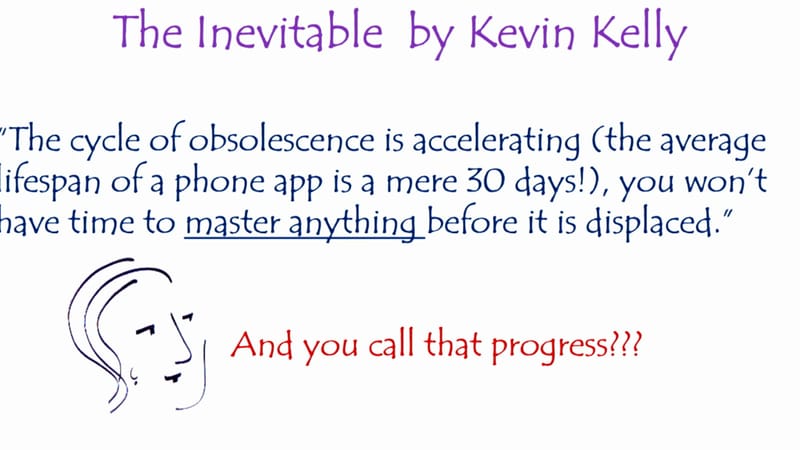
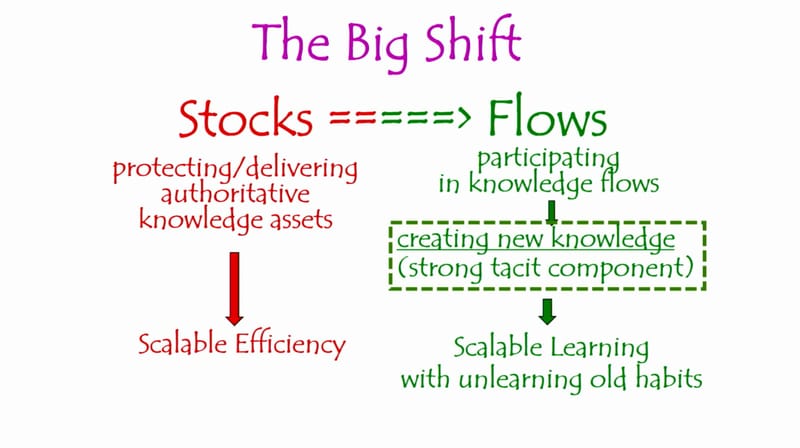
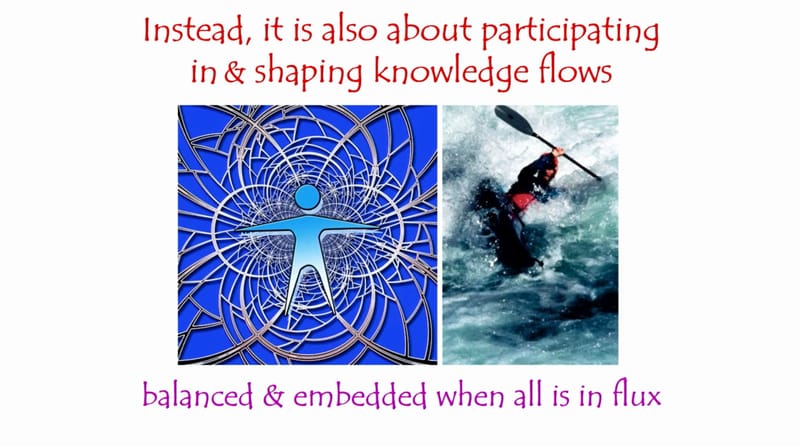
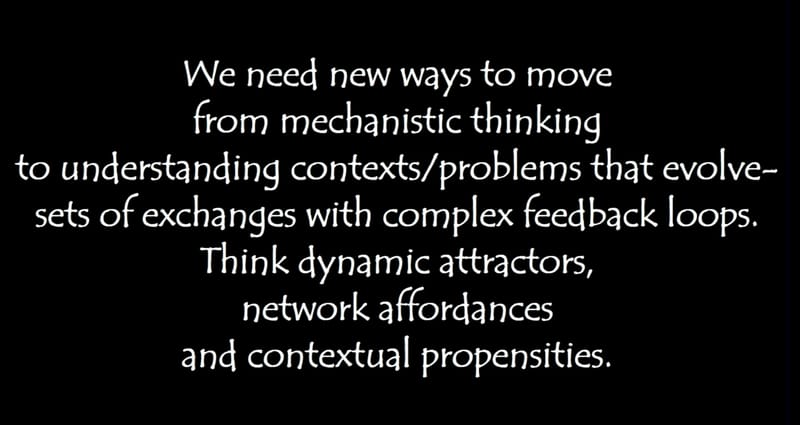
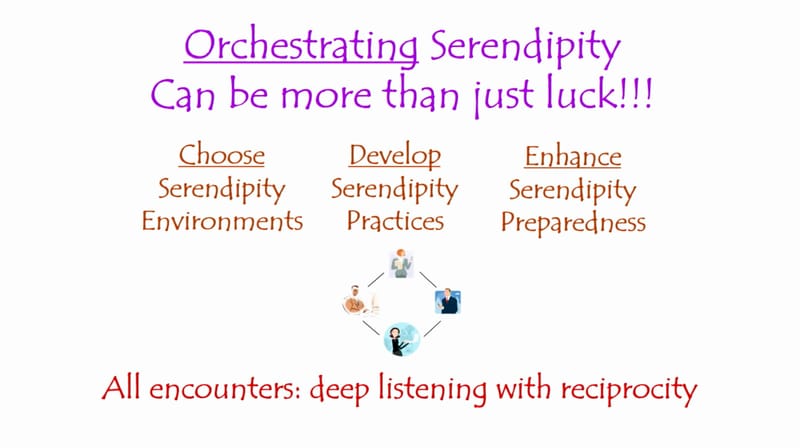
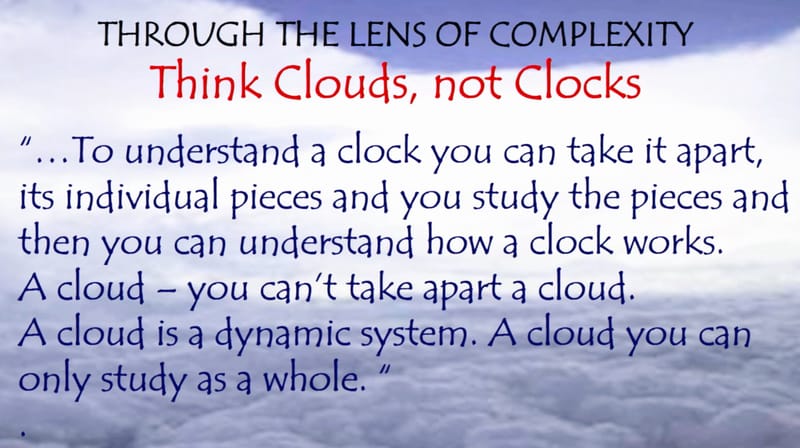

Directional/Qualitative/Evolutionary views on temporarily are very wide spread. See the following on A.E.Whitehead's views:
"He then observes that the mark of higher forms of life is that they are actively engaged in modifying their environment, an activity which he theorizes is directed toward the three-fold goal of living, living well, and living better. In other words, Whitehead sees life as directed toward the purpose of increasing its own satisfaction. Without such a goal, he sees the rise of life as totally unintelligible.
"
The root of such "models of accelerating/progressing time/change" is essentially the illusive notion of the Afterlife (in Christianity, Islam, etc.), Enlightenment (in Buddhism, etc.) or more generally "the other" which "we are racing towards". It is truly peculiar, how this narrative tempted and confused thinkers across all ages, right up to the present day (the cult of optimization and objective functions in artificial intelligence, etc.). Isaac Asimov's "The Last Question" short story eloquently explores the nonsensical nature of of such narratives.

Interesting alternative perspective on temporarily ("non-directional", "static", etc.) can be found in Japanese Shintoism or Soto Zen, where practitioners do not actively seek Enlightenment, but rather seek to fully experience every moment; that is, to be acutely aware of every action in the here and now. As Zen Master Taisen Deshimaru once said, "Zazen has no object, it is purposeless, it only brings us back to ourselves." One doesn't need to worry about Satori. Or in other words: Stop trying to understand. There is nothing to compute. There is nothing to discover. This is it, here and now.
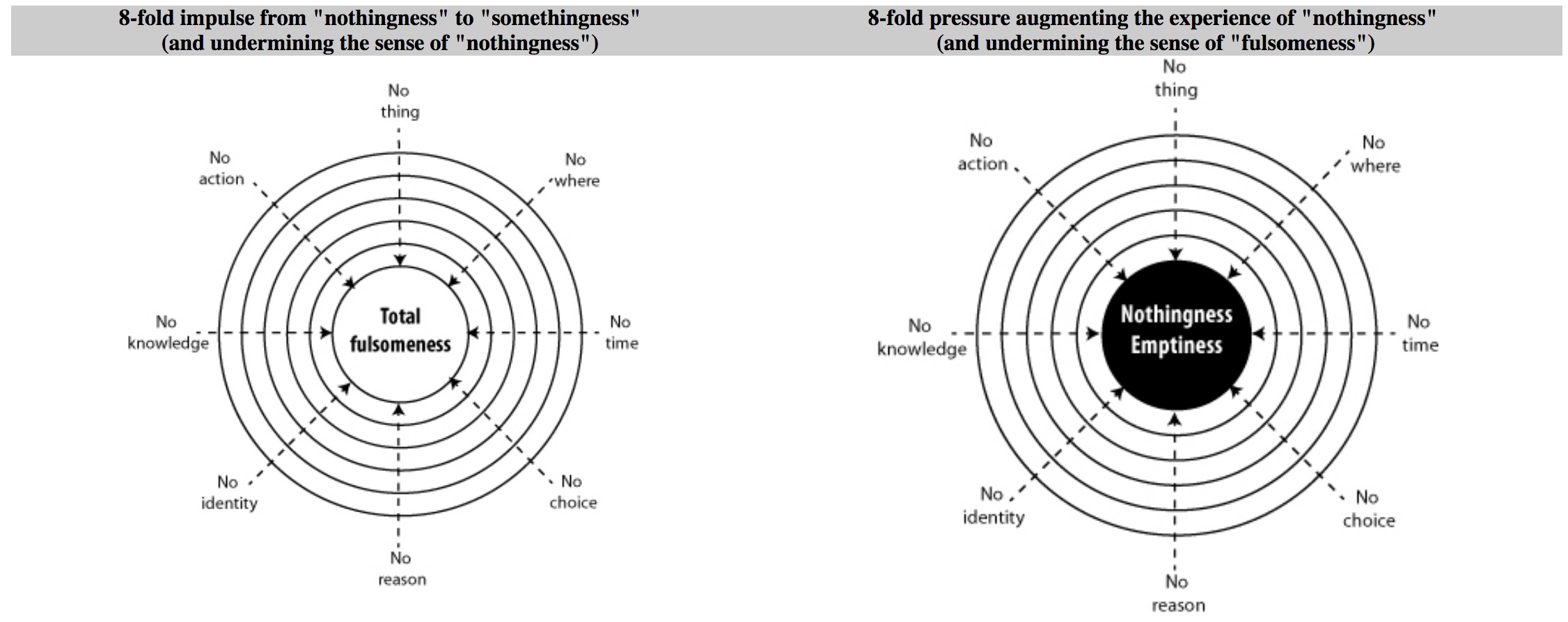
Finally, consider the following quote for a perhaps more relaxed and fun perspective on temporarily:
“In conclusion, there is no conclusion. Things will go on as they always have, getting weirder all the time.” ― Robert Anton Wilson

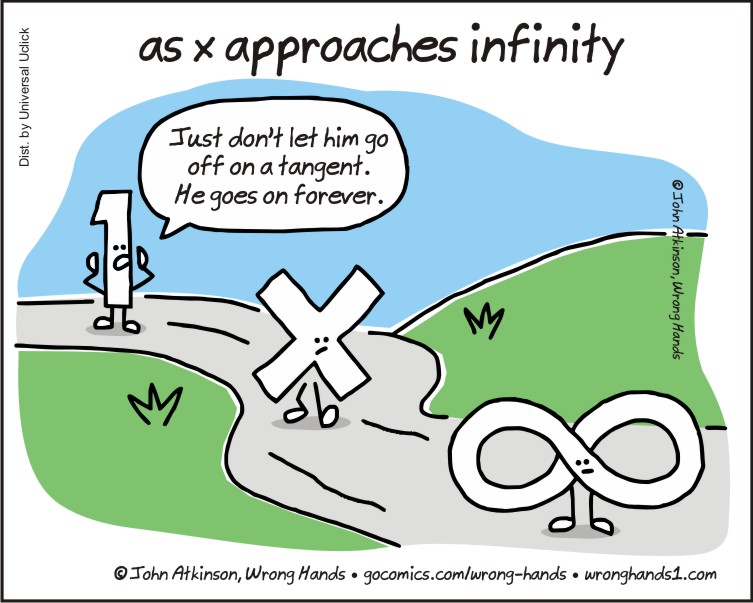

The US government has approved funds for geoengineering research (MIT Tech Review)

"The $1.4 trillion spending bills that Congress passed this week included a little-noticed provision setting aside at least $4 million for the National Oceanic and Atmospheric Administration to conduct stratospheric monitoring and research efforts. The program includes assessments of “solar climate interventions,” including “proposals to inject material [into the stratosphere] to affect climate.”
